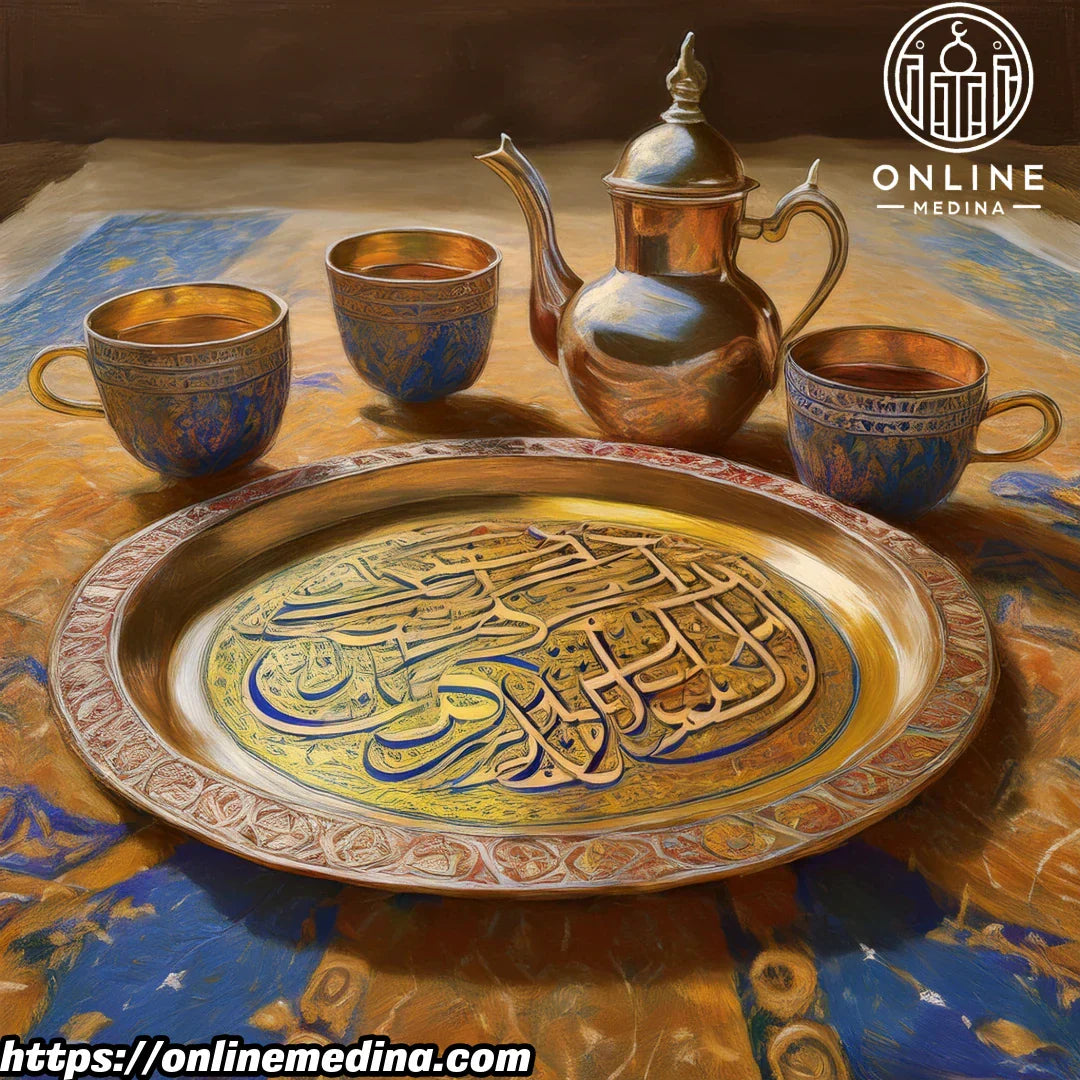
🎬 EPISODE 8: Arabic calligraphy & crafts
EPISODE 8. Elegant, spiritual, and steeped in history, Arabic calligraphy is not just a writing art, but a fundamental element of Moroccan craftsmanship, engraved in wood, painted on ceramics, and embossed on leather.

📜 An art born from the Islamic world
The history of Arabic calligraphy dates back to the revelation of the Quran in the 7th century, when writing became not only a means of communication, but also a sacred expression.
- 7th century: Birth of Arabic calligraphy under the Umayyad Caliphate.
- 9th–10th century: Development of the Kufic style, used in manuscripts and architectural decorations.
- 12th–15th century: Apogee of calligraphy in the Almohad and Marinid Empires, with inscriptions carved on wood and plaster in madrasas and mosques.
- Today: Calligraphy continues to inspire Moroccan artisans, from interior design to art objects.
📌 Like marquetry, calligraphy is often carved on noble wood supports.
📜 Moroccan calligraphic styles
Moroccan calligraphy is distinguished by its Andalusian and Maghreb influences:
- Kufic: A geometric and angular style used in ancient architecture and manuscripts.
- Maghrebi: More fluid and rounded, it is one of the most emblematic styles of Morocco.
- Thuluth and Diwani: Introduced later, often present in religious illuminations and decorations.
📌 Each style tells a story and brings a unique visual identity to the handcrafted objects.

📜 The application of calligraphy in Moroccan crafts
Arabic writing is not limited to paper. It adorns many handcrafted objects:
🛋️ Carved wood: Inscription of Quranic verses or geometric patterns on doors and furniture.
👞 Embossed leather: Leather slippers, bags and belts are given elegant calligraphic engravings.
🏺 Ceramics and zellige: The earthenware of Fez and Safi is decorated with Arabic calligraphic motifs.
🔨 Hammered metal: Copper and silver trays feature Arabic inscriptions, adding a refined touch.
📌 Calligraphic inscriptions often adorn Moroccan ceramics, especially those from Fez.

📜 The symbolism of calligraphy in crafts
Arabic calligraphy goes beyond aesthetics: it conveys a profound spiritual and cultural message.
📖 Quranic proverbs and verses: Often engraved on doors and furniture to bring blessing and protection.
🌀 Ornamental motifs: Calligraphy blends harmoniously with arabesques and geometric patterns.
🌍 A dialogue between tradition and modernity: Today, contemporary artists are reinterpreting calligraphy in a more abstract style.
📌 Calligraphy is not just an ornament, it is a strong cultural signature.

📜 Moroccan calligraphy: between tradition and modern design
The art of calligraphy finds its place in contemporary design and digital commerce.
🛒 Online Medina will offer Moroccan handicrafts incorporating calligraphy: wooden boxes, leather accessories, etc.
🌍 A booming market: Calligraphy applied to fashion and decoration is attracting more and more international buyers.
🎨 Fusion of craftsmanship and modern art: Many designers incorporate calligraphy into abstract and minimalist works.
💡 Why choose a calligraphed handcrafted object?
- A timeless and refined art
- A blend of tradition and spirituality
- Authentic, handmade craftsmanship

🎯 An art that spans the centuries
Arabic calligraphy, with its elegance and expressive power, is a pillar of Moroccan artistic heritage. It unites history, craftsmanship and spirituality, making each work a window onto Moroccan culture.
📌 In the next episode: Dive into the fascinating art of Moroccan zelliges, the colorful mosaics that have adorned palaces and mosques for centuries!
✒️ Inspired by the art of the line? Visit Online Medina and explore our spiritual and artistic pieces.
